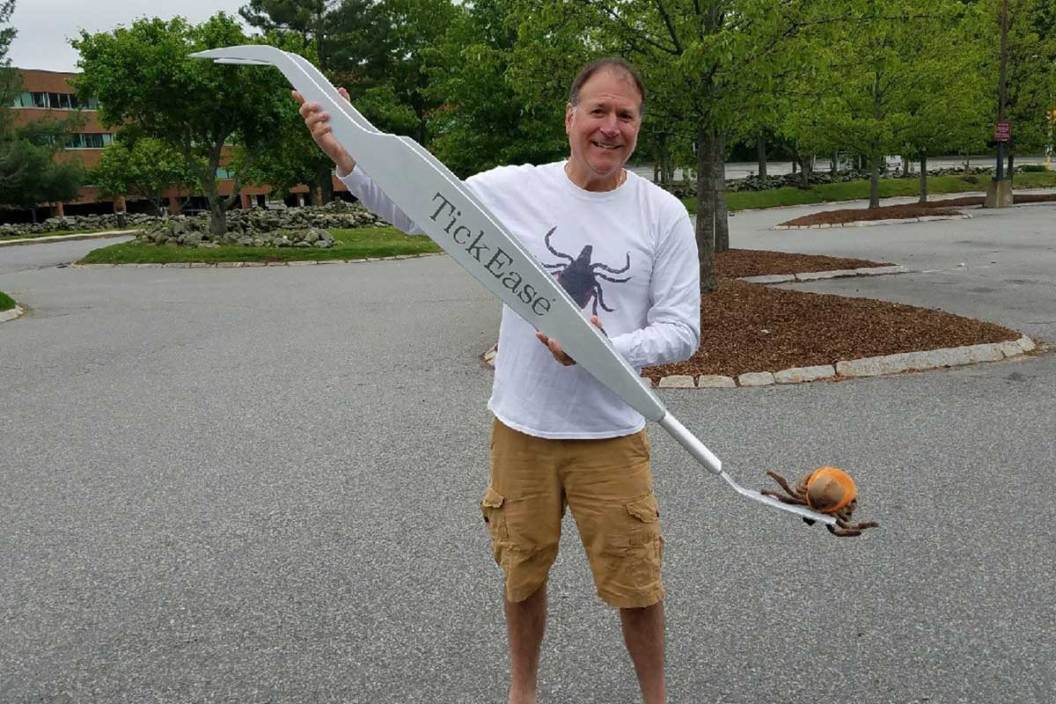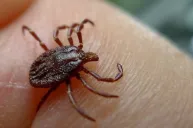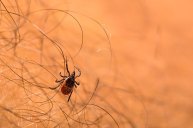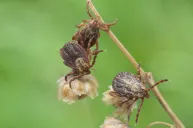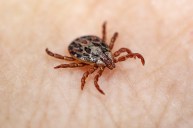Dan Wolff, aka: "Tick Man Dan," wore a tie emblazoned with images of ticks to his wedding. He regularly wears shirts and even a wristwatch with pictures of the arachnids on them. He has two tattoos of the creepy, blood-sucking pests permanently inked onto his left leg. He even goes on tick hunting expeditions, and he keeps jars of them around his home. This may strike some people as weird, but for Wolff, they're conversation starters on a subject he's passionate about. Plus, it's part of how he makes his living. Tick Man Dan's mission is simple: to educate the public on the dangers posed from the diseases and parasites carried by ticks, and to promote his brand, TickEase. The company makes a set of specialty tweezers designed by Wolff himself that are meant specifically for the removal of ticks and their nymphs once embedded in a person.
When I spoke to Wolff via Zoom from his home in Massachusetts, I learned more about ticks in one 40-minute sitting than I had learned my whole life. We spoke about TickEase and their Tick-Kits, proactively preventing issues, and his general enthusiasm for these tiny creatures that are capable of causing such big problems.
Taking an interest
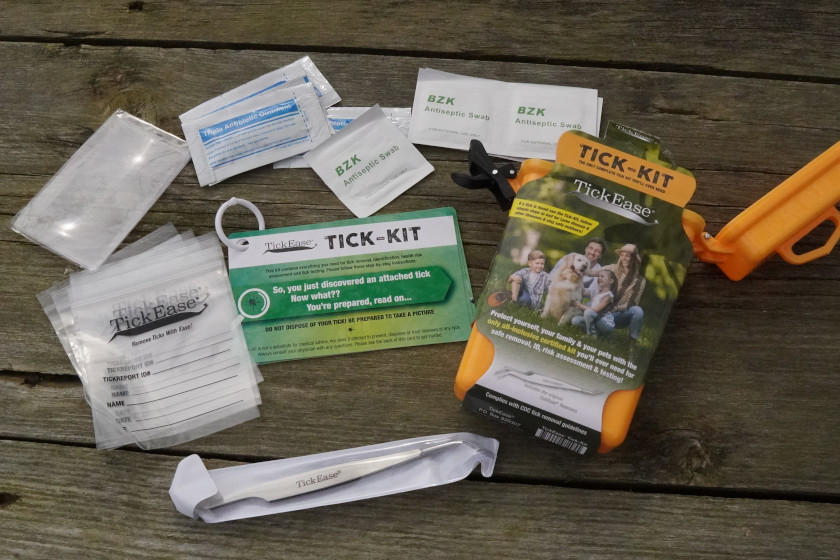
Travis Smola
Wolff is an avid outdoorsman and hunter, and he wasn't always so passionate about ticks. His interests were jump-started around 2015, partially because of all the ticks he was finding on himself and his family, and also because many of his friends were getting sick from tick-borne illnesses around him.
"I had friends that were very vibrant, active businesspeople, family people who...became basically bed-ridden," Wolff said. "They couldn't enjoy themselves, couldn't produce, and that was because of Lyme."
Like most everyone else, he went online for information and quickly found there wasn't a lot out there about tick removal. There were some subpar removal tools available, but the more he learned about ticks, the more he realized they only addressed part of the problem. The tools were often large and featured a scoop-like end meant to help pull the ticks out. However, Wolff saw one design flaw. The tools worked well for adult ticks, but they couldn't remove an embedded nymph stage tick because they were too large.
"I then came up with the idea sitting in my basement," Wolff said. "I molded the prototype out of tinfoil and that was about the extent of my design experience. So, having that, we started buying tweezers and breaking them."
Eventually, with the help of a friend with a body shop where they could do some welding, Wolff and his team came up with the double-sided TickEase tweezers. One side is thin for pulling ticks out of people, and the other side features a fine slot to help remove them from pets. They are the only tweezers that have been deemed CDC-compliant for the removal of ticks.
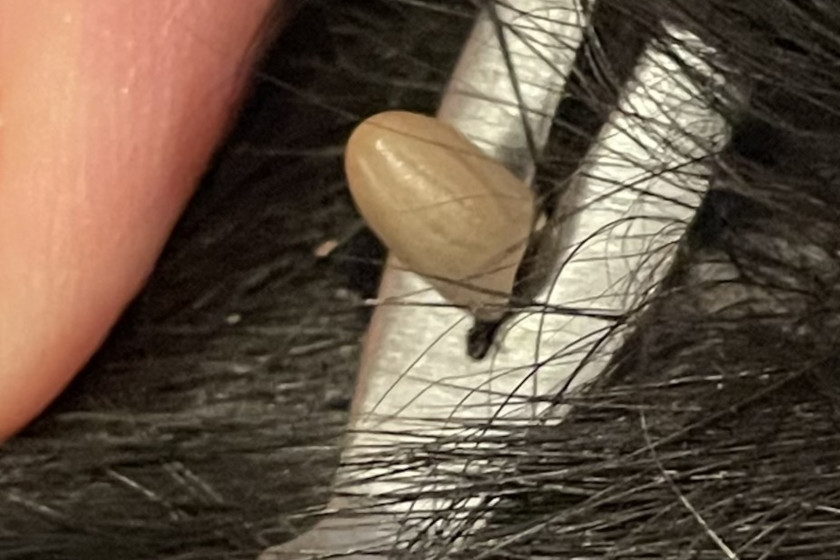
TickEase/Dan Wolff
The company sells not only the tweezers, but also a recently-added tick-repelling bandana for dogs that uses permethrin. And of course, they offer a complete tick removal kit that includes supplies for sending a tick in for testing and detailed instructions on how to deal with an embedded pest.
"This brings you through it step-by-step," Wolff said. "The nice thing about it is we have access to the University of Rhode Island's Tick Spotters network, which is a crowd-sourced data management program that will identify and assess your risk based on the picture of the tick you sent in."
That Tick Spotters program is actually a free service, but it's not likely people would know about it without the connection with Tickease. Wolff made it easy to gain peace of mind for folks nervous about ticks, and his company has grown significantly in the last few years.
Educating the public
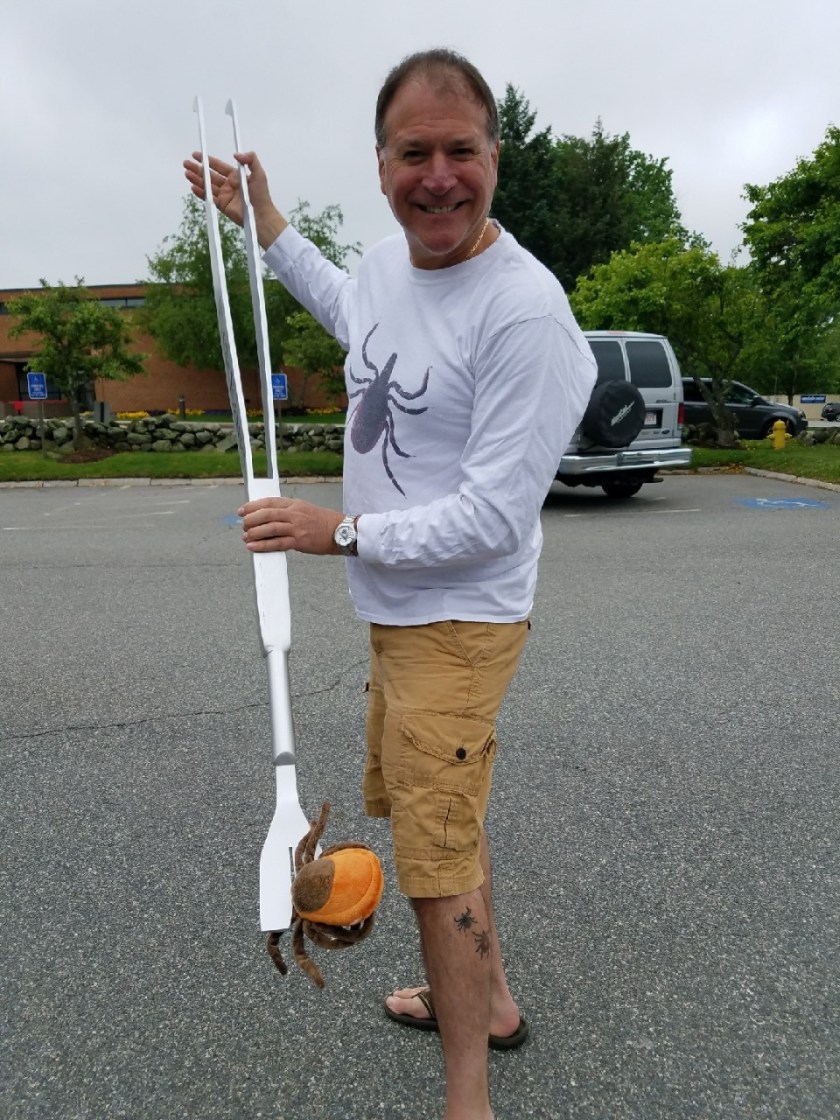
TickEase/Dan Wolff
Through all this work, Wolff quickly became an expert in ticks and discovered a passion for educating others about them.
Wolff's enthusiasm for talking about ticks is almost infectious. When he was still single, he used to place his phone, which has a case emblazoned with a tick on it face-down on the bar next to him where it was clearly visible. The case also has the words: "Please ask me about ticks" printed on it. If a woman happened to see it, it was an instant ice breaker.
"They'd finally say: 'All right, what is this?' It was an opening," Wolff said with a chuckle.
He genuinely loves talking about this subject and it's hard not to get roped into the fascinating things he's learned about ticks over the years. He now speaks to groups of school kids, Boy Scouts, TV audiences, and radio shows about some of the more fascinating aspects of these pests. For instance, he often points out that New England is one of the core areas for Lyme disease, which may come as a surprise to some people.
"Up until the last few years, 14 states in the Northeast and Upper Midwest made up ninety-plus percent of the reported cases of Lyme. Now it's quite widespread just because of what's been going on. Climate change, wildlife proliferation, suburban sprawl, all that is providing mast years," Wolff said. "When we've got a lot of acorns, that cascades into translating into a lot more Lyme disease, believe it or not.
"The acorns are feeding the mice, the mice are the reservoir for the ticks, the warmer weather gets more ticks, and when you have more ticks and more mice and more reservoir, you have more ticks getting infected and then biting people and pets. That's how it all kind of translates," he added.
Then there are other fascinating tidbits, such as how ticks can be active year-round. Despite popular opinion, they don't all die off at the end of the summer and beginning of winter. They are perfectly adapted to go into a dormant state that's like a form of suspended animation called diapause.
"They have a substance in their bodies called glycerol which is like an antifreeze for their cells," Wolff said. "If the tick is producing glycerol because it's cold, and it has an active Lyme bacteria within it, believe it or not, the glycerol feeds the Lyme bacteria."
In fact, he has noticed ticks might start up fast with a feeding frenzy if there's periods of cold interrupted with a sudden increase in temperatures. His tick hunting expeditions, conducted with a dowel rod and a towel swished through the brush, seem to confirm this.
"The highest rate of ticks I've found occurred in the middle of February about three years ago close to my house here in eastern Massachusetts," he said. "We had cold temperatures, the temperatures went up into the 60s, close to 70 degrees, for a two or three-day stretch and maybe even a little longer. I went out and I was getting ticks at about the rate of 50 per hour."
Dropping fascinating data points like these also give Wolff the chance to clear up common misinformation on the dangers of ticks. More importantly, he addressed some common misnomers on what happens if you are bitten by one or how to react.
"A lot of people think 'Oh, yeah, I read if the tick's not in you for 36 hours, you're okay,'" Wolff said. "Never think that way, because there's 15 illnesses you can get from one tick bite, conceivably."
And the transmission times for those viruses can vary from anywhere from a few days to a month after the first bite.
"So yeah, you could be safe from Lyme, but you could get anaplasmosis, or babesiosis, or Powassan virus, which is transmitted in minutes," Wolff said.
How to remove a tick
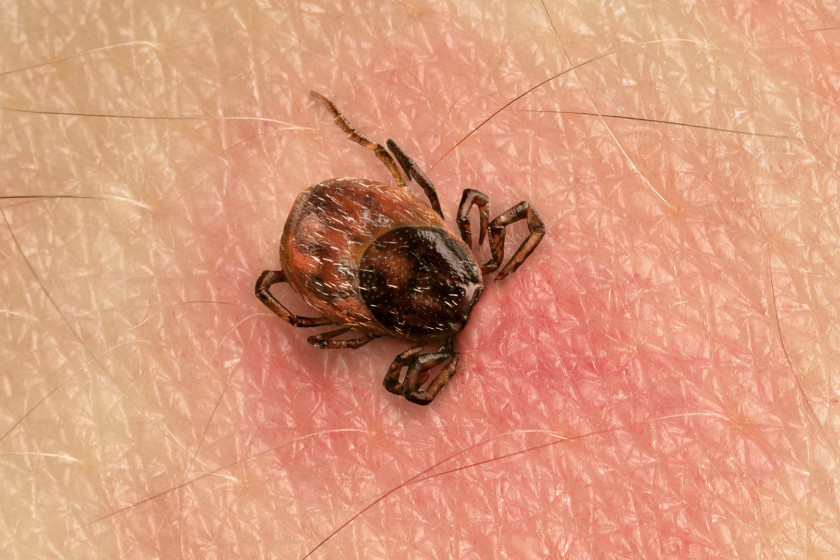
Getty Images: Smileus
What does a tick expert recommend doing once you find one has deeply embedded itself in you? Wolff likes to keep things simple for the most part.
"First of all, don't panic, get it off as safely and as quickly as you can," Wolff said.
The best way is to use a pair of tweezers. He recommends using your tweezers to brush the tick's legs up so it's standing straight up in your skin before you attempt to remove it.
"Come in sideways, squeeze low to the skin and just lift straight up," Wolff said. "That's the best thing to do. You don't have to twist it, but if you pull it straight up, nine times out of ten you're going to remove that thing completely intact with tweezers and you won't break it off."
He adds that even if you do break it off, it's not as big of a deal as you might think. You've already been exposed to the tick as much as you can be, he says. The mouth part can be removed like a splinter, or you can allow it to work itself out on its own. The reason ticks are so hard to remove is mostly thanks to the barbs in the hollow tube of its mouth.
"Those barbs penetrate the skin, then there's another substance that acts like glue. It fills in the little spaces between the barbs and adheres to the skin," he said.
When removing a tick, Wolff says it's vital to not to get the contents of the abdomen in you or on your fingers, because that's the stuff that can spread parasites and diseases. Wolff said it's best to surprise the tick and remove it quickly before it can react.
"You don't want to agitate that tick because if you tear it or rupture it, it could be spitting back into you, it could just be leaking into the bite site, or you could get it on your fingers or touch your eyes or nose," Wolff said.
He mentioned that it's important to never twist when pulling out a tick, and you should never try to burn an embedded tick or try putting any sort of chemical or substance on them to loosen their grip. Pulling them out is the best option. He notes that if you're in the backcountry, you might not always have access to tweezers or a TickEase kit. Even then, he recommends immediate removal using whatever you can find.
"In that situation, get that tick off. You can pull it off. If you try to do it with your fingers, try to do as good of a job as you can, or scrape it off with a card," he said. "It's better to get that thing off than to wait, even if you don't have the right tool."
Spoken like a true tick pro. For more information on the TickEase removal tweezers and tick kit, check out their official website.
For more outdoor content from Travis Smola, be sure to follow him on Twitter and Instagram For original videos, check out his Geocaching and Outdoors with Travis YouTube channels.
